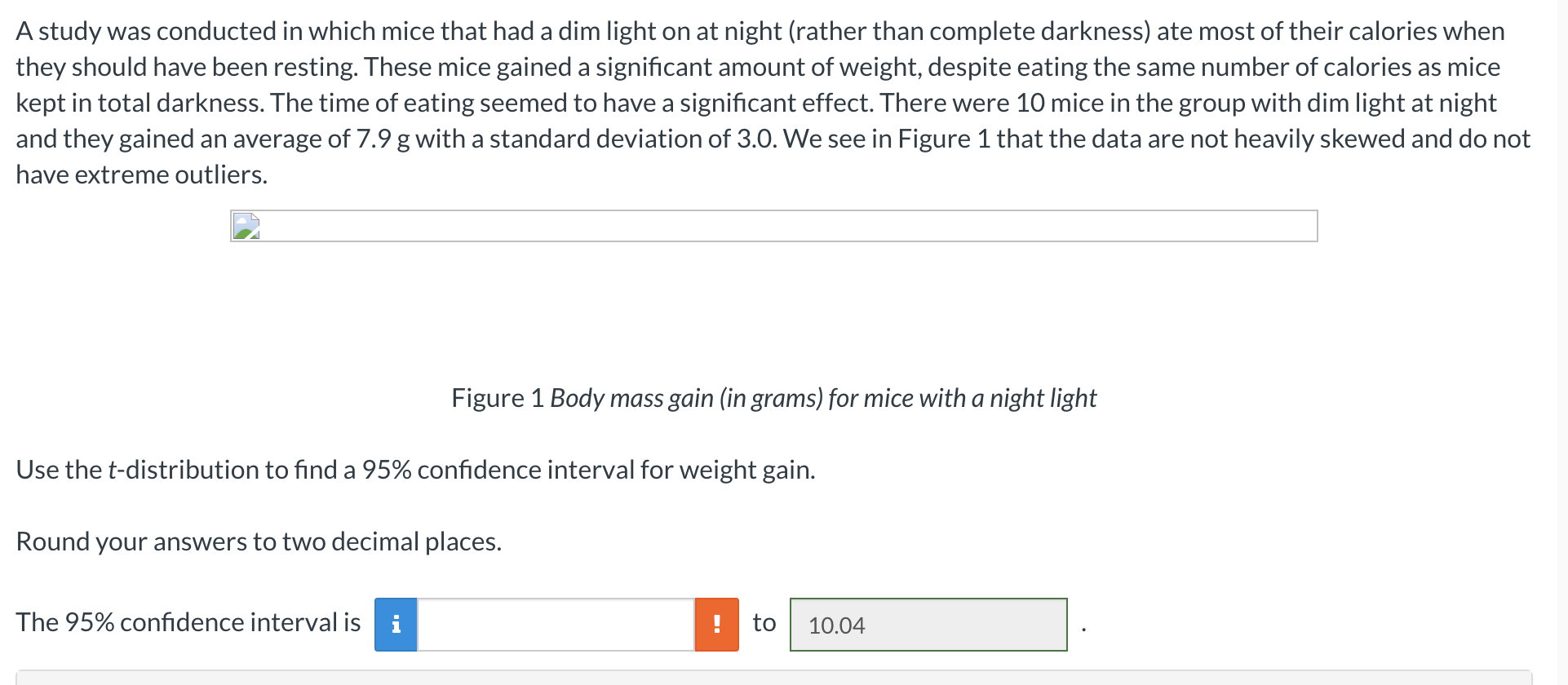Home /
Expert Answers /
Statistics and Probability /
a-study-was-conducted-in-which-mice-that-had-a-dim-light-on-at-night-rather-than-complete-darknes-pa662
(Solved): A study was conducted in which mice that had a dim light on at night (rather than complete darknes ...
A study was conducted in which mice that had a dim light on at night (rather than complete darkness) ate most of their calories when they should have been resting. These mice gained a significant amount of weight, despite eating the same number of calories as mice kept in total darkness. The time of eating seemed to have a significant effect. There were 10 mice in the group with dim light at night and they gained an average of 7.9 g with a standard deviation of 3.0. We see in Figure 1 that the data are not heavily skewed and do not have extreme outliers. Figure 1 Body mass gain (in grams) for mice with a night light Use the t-distribution to find a 95% confidence interval for weight gain. Round your answers to two decimal places. The 95% confidence interval is to 10.04
